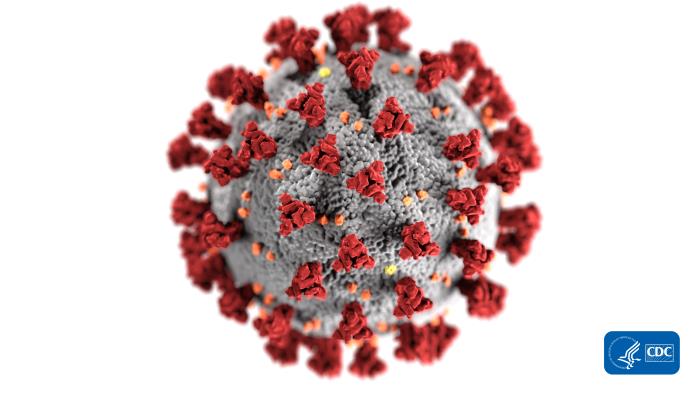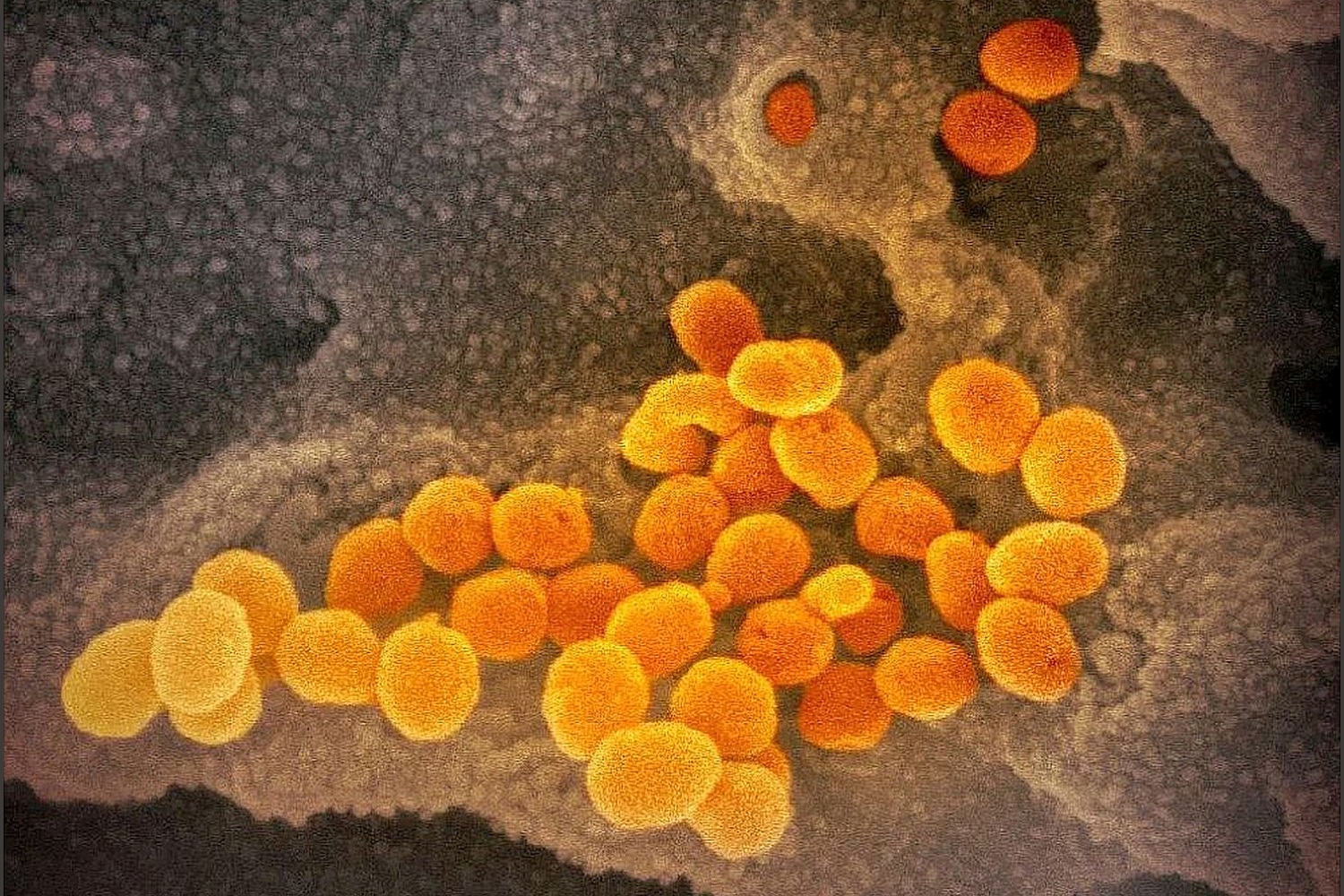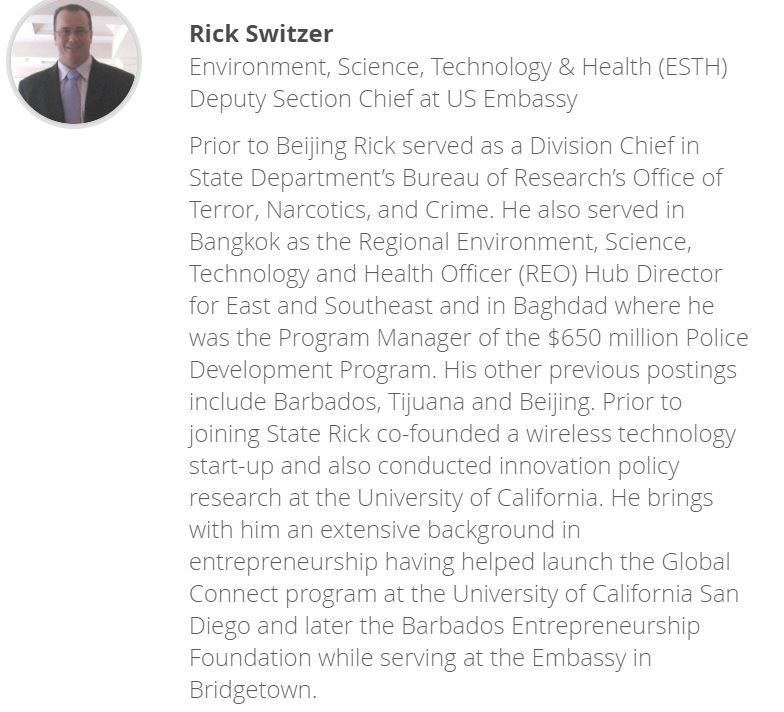NY Times Finds Trump Administration Inserted Wuhan Cables Into The Aluminum Tubes Echo Chamber
In my last two posts, I went into detail on what is known on the scientific front about the origin of SARS CoV-2, the virus responsible for the COVID-19 outbreak and then into what evidence Shi Zhengli of the Wuhan Institute of Virology (WIV) has offered to refute the rumors of the virus escaping from her lab. This post will set aside discussion of the science (other than to eventually provide a few quotes that have been provided by scientists addressing these issues) and will instead focus on what has been increasing evidence that there has been a concerted effort akin to an information operation to create acceptance of the idea that the virus escaped from WIV. Today, the New York Times confirmed these suspicions and indicated clearly who is behind the operation. Here’s a partial screen capture of the story by a team that includes Mark Mazzetti and Adam Goldman:
Although I was becoming convinced of an information operation, I wasn’t sure who was orchestrating it. This Times article leaves no doubts:
Senior Trump administration officials have pushed American spy agencies to hunt for evidence to support an unsubstantiated theory that a government laboratory in Wuhan, China, was the origin of the coronavirus outbreak, according to current and former American officials. The effort comes as President Trump escalates a public campaign to blame China for the pandemic.
Some intelligence analysts are concerned that the pressure from administration officials will distort assessments about the virus and that they could be used as a political weapon in an intensifying battle with China over a disease that has infected more than three million people across the globe.
Most intelligence agencies remain skeptical that conclusive evidence of a link to a lab can be found, and scientists who have studied the genetics of the coronavirus say that the overwhelming probability is that it leapt from animal to human in a nonlaboratory setting, as was the case with H.I.V., Ebola and SARS.
The article even goes on to name some of those pushing the link to an escape from the lab, including Mike Pompeo and Anthony Ruggiero. Who is Ruggiero, you might ask? Oh, that answer is full of rich irony:
And Anthony Ruggiero, the head of the National Security Council’s bureau tracking weapons of mass destruction, expressed frustration during one videoconference in January that the C.I.A. was unable to get behind any theory of the outbreak’s origin. C.I.A. analysts responded that they simply did not have the evidence to support any one theory with high confidence at the time, according to people familiar with the conversation.
Here we have officials working for Trump who are actively pushing an unsubstantiated theory that could be used to spark an international conflict. And one of those officials just happens to work on the issue of weapons of mass destruction. Gosh, it’s not like that topic has ever led to problems based on manipulating information from the intelligence community, is it? In fact, the article eventually gets there on how this is looking like a replay of Iraq:
A former intelligence official described senior aides’ repeated emphasis of the lab theory as “conclusion shopping,” a disparaging term among analysts that has echoes of the Bush administration’s 2002 push for assessments saying that Iraq had weapons of mass of destruction and links to Al Qaeda, perhaps the most notorious example of the politicization of intelligence.
The C.I.A. has yet to unearth any data beyond circumstantial evidence to bolster the lab theory, according to current and former government officials, and the agency has told policymakers it lacks enough information to either affirm or refute it. Only getting access to the lab itself and the virus samples it contains could provide definitive proof, if it exists, the officials said.
And the parallels go even deeper:
The Defense Intelligence Agency recently changed its analytic position to formally leave open the possibility of a theory of lab origin, officials said. Senior agency officials have asked analysts to take a closer look at the labs.
The reason for the change is unclear, but some officials attributed it to the intelligence analyzed in recent weeks. Others took a more jaundiced view: that the agency is trying to curry favor with White House officials. A spokesman for the agency, James M. Kudla, disputed that characterization. “It’s not D.I.A.’s role to make policy decisions or value judgments — and we do not,” he said.
So now we even have the remains of Cheney’s “Team B” within DIA, itching to make Trump happy. For those who may have forgotten, we have none other than that neocon himself, Eli Lake, talking glowingly of the Team B folks and DIA pushing back on CIA even before the invasion of Iraq:
THE CURRENT SCHISM has roots going back to the early ‘70s. In 1974 a collection of neoconservative foreign policy intellectuals on the President’s Foreign Intelligence Advisory Board began attacking the CIA-authored NIEs for the Soviet Union, accusing the Agency of cooking its books to defend Henry Kissinger’s policy of détente by underestimating Soviet military expenditures.
So the group—which included Harvard historian Richard Pipes; former arms control negotiator and ambassador-at-large under President Ronald Reagan, Paul H. Nitze; the retired director of the Defense Intelligence Agency (DIA), Daniel Graham; and a then-little-known staff member of the Arms Control and Disarmament Agency, Paul Wolfowitz—asked the CIA for access to the Agency’s files to create their own assessment of Soviet intentions and capabilities. In 1976 they received that access from then-CIA Director George H.W. Bush. That fall the group—which came to be known as Team B—produced an intelligence assessment for the president, contending that the Soviet Union’s military expenditures would not be curtailed by concerns over their potential impact on the ussr’s economic health. That conclusion became the cornerstone of Reagan’s policy for outspending the Soviet military in order to hasten the collapse of the Soviet economy.
Fast-forward to the current day. Wolfowitz, now deputy secretary of defense, still doesn’t trust the CIA—but this time the bone of contention is Iraq. As during his tenure on Team B, Wolfowitz finds himself amid a loose network of neocons inside and outside government—this time including his boss, Defense Secretary Donald Rumsfeld; Undersecretary of State for Arms Control and International Security John R. Bolton; Chairman of the Defense Policy Board Richard Perle; and Vice President Dick Cheney’s Chief of Staff and national security adviser I. Lewis “Scooter” Libby—arguing for an aggressive foreign policy posture. So, in a repetition of history, the neocons have devoted themselves to offering an alternative to what they see as the CIA’s timid and inaccurate intelligence assessments—assessments that downplayed the possibility of Al Qaeda sleeper cells in the United States prior to September 11; failed to predict India’s nuclear tests in 1998; and underestimated the speed with which the North Koreans would be able to test a multistage missile. The difference is that this time the neocons don’t have to ask the CIA’s permission to gain access to classified intelligence, because Wolfowitz and Rumsfeld already control between 85 percent and 90 percent of the U.S. intelligence budget, including the agencies responsible for signal intercepts, satellite surveillance, and the DIA. “This is a case of going in-house because [Rumsfeld] is not happy with the intelligence he’s gotten from the CIA,” says Melvin Goodman, a professor of international security at the National War College and a former CIA analyst.
Of course, as always, the neocons were dead wrong about the Iraq intelligence and were simply gaming it to get the war they longed for.
Another of the key bits of intelligence gaming came with the aluminum tubes story, “broken” by Michael Gordon and Judy Miller. In the retrospective in 2004, we find that there was in fact ample evidence showing the tubes were inadequate for uranium centrifuges and were in fact components for small artillery rockets.
Cheney and Miller have since been inextricably linked to this huge information operation, because Miller’s article was quickly followed up by multiple appearances by Cheney talking up this “intelligence” in the drumbeat for the Iraq war. Marcy has noted how this history follows both Miller and Cheney.
If August 24 is seen as Aluminum Tube Day, then it seems likely that April 14 will become Wuhan Cable Day. And just as the aluminum tube story was catapulted nearly simultaneously by multiple people for maximum media impact, the same is true on the attacks on WIV.
The timing of April 14 is interesting, as the Times article today notes that on the 7th, a meeting of the intelligence community came to the conclusion that the origin of the outbreak is unknown:
Richard Grenell, the acting director of national intelligence, has told his agencies to make a priority of determining the virus’s origin. His office convened a review of intelligence officials on April 7 to see whether the agencies could reach a consensus. The officials determined that at least so far, they could not.
Just one week later, it looks like Team B has its ducks in a row and we suddenly have John Roberts of Fox News noting the 2018 State Department cables and asking an incredibly specific question about supposedly infected WIV personnel while pushing the lab as a source:
And the same day, we have Josh Rogin, who formerly worked with Eli Lake, putting out his column hawking the cables, claiming that they show officials being concerned that lax security at WIV at that time created a huge risk for a release of a dangerous virus. But his only actual quote from the cable he says he saw was one that just talks about a shortage of trained personnel. He then grudgingly admits the cables were sent as a plea for help in getting more training for the lab.
I had missed until yesterday this terrific takedown of Rogin and his April 14 column by Max Blumenthal. Blumenthal notes that virologist Angela Rasmussen also finds the cable excerpt not to be a smoking gun:
Dr. Angela Rasmussen, a virologist and associate research scientist at the Center of Infection and Immunity at the Columbia University School of Public Health, pointed out that the cable “argues that it’s important to continue working on bat CoVs because of their potential as human pathogens, but doesn’t suggest that there were safety issues specifically relating to WIV’s work on bat CoVs capable of using human ACE2 as a receptor.”
Ultimately, Josh Rogin was forced to admit that there was no evidence to support his insinuations, conceding in the penultimate paragraph of the article, “We don’t know whether the novel coronavirus originated in the Wuhan lab.”
Of note also is that Blumenthal found Rasmussen calling out Rogin on Twitter. Among several exchanges between the two was Rasmussen asking for Rogin to release the entire cable and Rogin refusing.
And just because the Iraq parallels never end, Blumenthal also found the 2020 version of Curveball, a regime-change agitator posing as someone in possession of important technical information:
Instead of discussing issues surrounding WIV with scientific experts, Rogin attempted to bolster his claims by relying on the speculation of anonymous Trump administration officials and Xiao Qiang, an anti-Chinese government activist with a long history of US government funding.
Rogin referred to Xiao merely as a “research scientist,” dishonestly attempting to furnish academic credibility for the professional political dissident. In fact, Xiao has no expertise in any science and teaches classes on “digital activism,” “internet freedom,” and “blogging China.” Revealingly, Rogin completely omitted the real record of Xiao Qiang as an anti-Chinese government activist.
For over 20 years, Xiao has worked with and been funded by the National Endowment for Democracy (NED), the main arm of US government regime-change efforts in countries targeted by Washington. The NED has funded and trained right-wing opposition movements from Venezuela to Nicaragua to Hong Kong, where violent separatist elements spent much of 2019 agitating for an end to Chinese rule.
Xiao served as the executive director of the New York-based NGO Human Rights in China from 1991 to 2002. As a long-time grantee of the NED, he served as vice-chairman of the steering committee of the World Movement for Democracy, an international “network of networks” founded by the NED and “for which the NED serves as the secretariat.” Xiao is also the editor-in-chief of China Digital Times, a publication that he founded in 2003 and that is also funded by the NED.
It’s truly remarkable how these folks have been using the same playbook for nearly 50 years. But because tossing out bogus information and then firing up the echo chamber to repeat it endlessly has worked for them so many times, they’ll just keep doing it until we stop them or at least impose some real consequences once the truth comes out. I suppose we can take some solace in the fact that this time these actions are being called out in real time, but I still don’t hold out a lot of hope for Team B being prevented from inciting more violence before this is all over.




